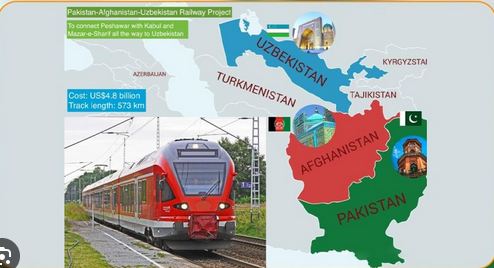The commitment by Pakistan and Uzbekistan to enhance connectivity through a proposed rail link via Afghanistan marks a monumental step toward regional economic integration. This ambitious infrastructure project holds the potential to unlock vast trade opportunities, spur economic growth, and foster deeper people-to-people ties between Central and South Asia. With both nations already taking concrete steps, such as initiating direct flights, this rail corridor could be a true game-changer, transforming not just bilateral relations but also the broader regional economic landscape.
Central Asia, a region rich in natural resources and energy, has long sought efficient and reliable trade routes to access global markets. Pakistan, with its strategic location and the deep-sea Gwadar Port, offers a viable and crucial gateway. A direct rail link connecting Uzbekistan to Pakistan through Afghanistan would drastically reduce transportation costs and transit times, making regional trade far more competitive and attractive. Uzbekistan’s economy, with its significant exports of cotton, textiles, and minerals, could gain unprecedented access to the Arabian Sea. Conversely, Pakistan could supply a wide array of goods, including agricultural products, pharmaceuticals, and manufactured goods, to a new and expansive market. This enhanced connectivity would allow both nations to diversify their trade portfolios and integrate more deeply into larger, more efficient supply chains, benefiting industries and consumers on both sides.
Moreover, this rail link would serve as a powerful complement to the existing China-Pakistan Economic Corridor (CPEC). By linking major Central Asian hubs like Tashkent directly to key Pakistani ports like Karachi via Peshawar, the corridor could become a vital artery for broader Eurasian trade. This would not only attract significant foreign investment but also boost economic activity and create new jobs across the entire region. The project essentially extends CPEC’s reach, creating a seamless network that could redefine logistics and trade from China to Central Asia and down to the Indian Ocean.
The benefits of improved rail connectivity extend far beyond mere commerce. This project would also facilitate significant cultural, educational, and social exchanges. Central Asia and Pakistan share deep historical and civilizational ties, rooted in the ancient Silk Road and centuries of shared Islamic scholarship. Easier and more affordable travel would encourage a new era of tourism, academic collaboration, and cultural interactions, fostering mutual understanding and building bridges between people. Pilgrims, students, and entrepreneurs would all benefit from seamless movement, helping to forge lasting relationships that go far beyond government-level agreements. This human element is critical for building enduring regional stability and cooperation.
The biggest obstacle to this visionary project remains the persistent issue of Afghanistan’s stability. Security concerns and political uncertainties have long been the primary hindrance to transnational infrastructure projects in the region. However, there is a renewed, albeit cautious, sense of optimism. The current Afghan authorities have expressed public support for regional connectivity, recognizing its potential to bolster their own economy and stability. For this project to succeed, both Pakistan and Uzbekistan must engage with Afghan authorities to ensure the safe and efficient operation of the rail link. Additionally, securing international backing—particularly from major regional players like China and Russia, who have vested interests in Eurasian connectivity—could provide the necessary political and financial impetus to overcome challenges. Multilateral platforms like the Economic Cooperation Organization (ECO) and the Shanghai Cooperation Organization (SCO) should be leveraged to garner this broader support and coordinate efforts.
The recent introduction of direct flights between Tashkent and Islamabad demonstrates the serious commitment both nations have to deepening ties. The next logical step is to translate this goodwill into tangible rail infrastructure. The Uzbekistan-Pakistan rail link is not just a transportation project; it is a bridge between regions, economies, and civilizations. If realized, it could redefine trade dynamics, create jobs, and bring distant communities closer than ever before. While challenges remain, the political will displayed by both nations is incredibly encouraging. The time is ripe for bold, collaborative action to turn this vision into a reality, ensuring a more prosperous future for generations across Central and South Asia.

















